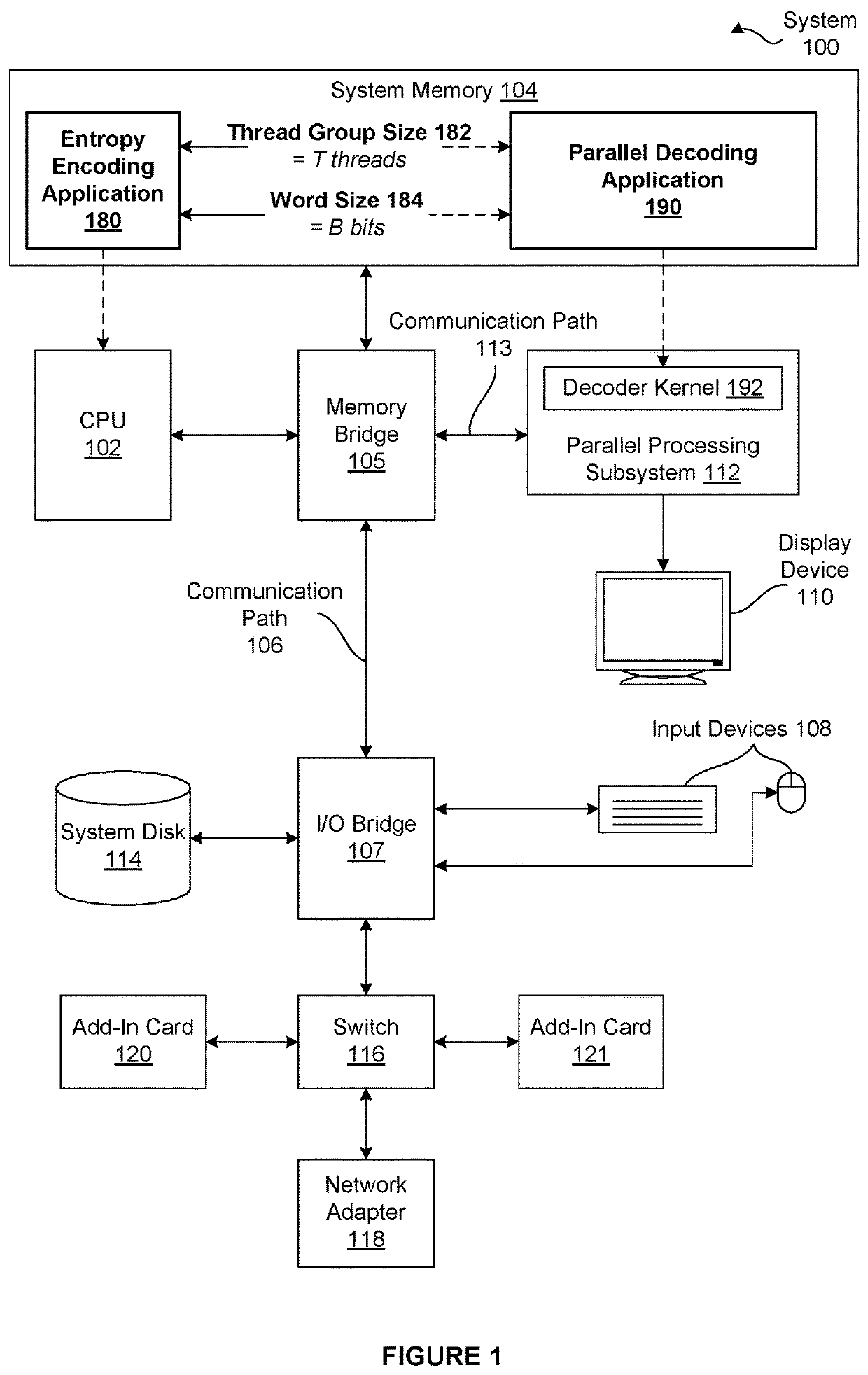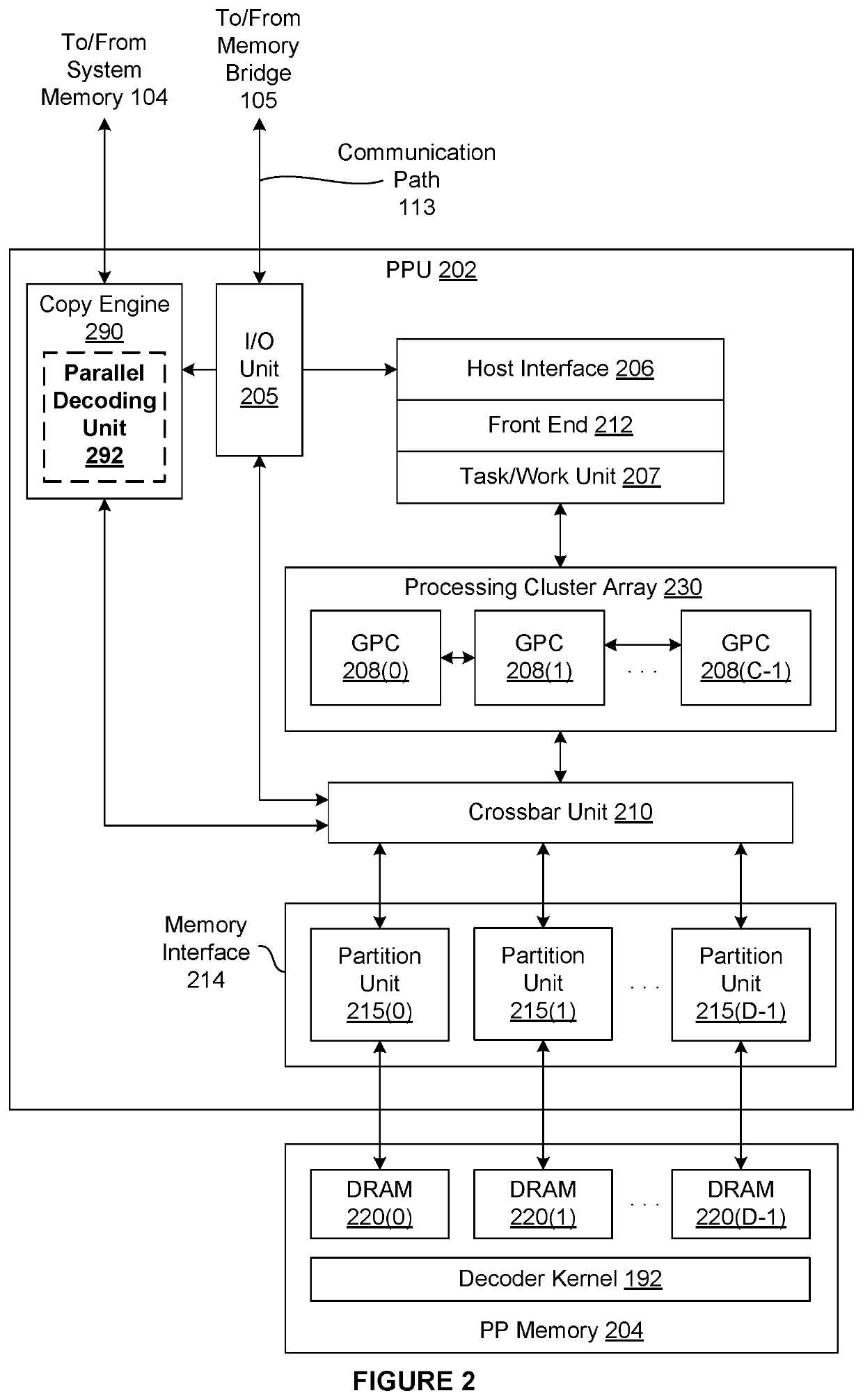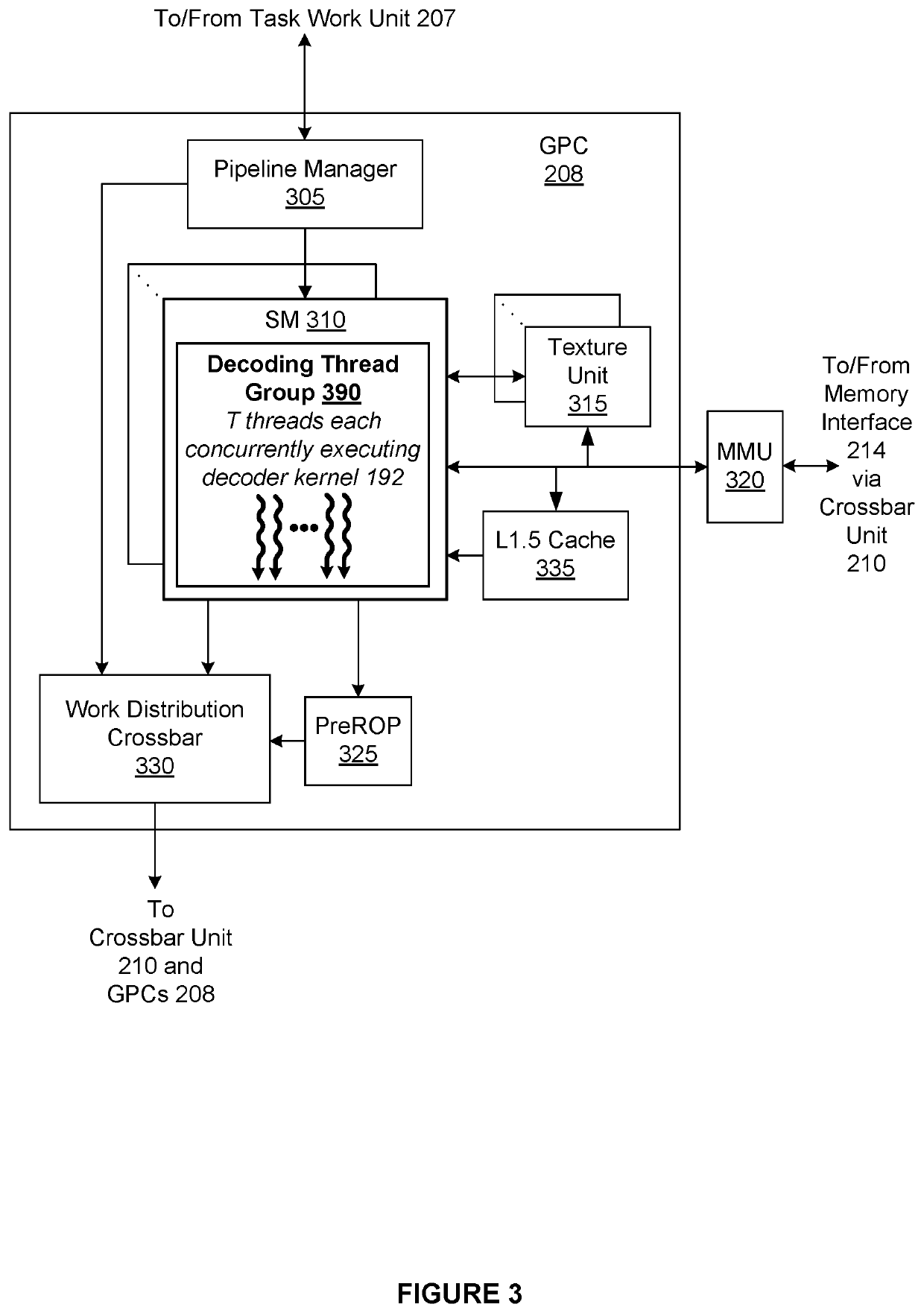Parallel decoding techniques
- Summary
- Abstract
- Description
- Claims
- Application Information
AI Technical Summary
Benefits of technology
Problems solved by technology
Method used
Image
Examples
Embodiment Construction
[0002]The various embodiments relate generally to parallel processing systems and, more specifically, to parallel decoding techniques.
DESCRIPTION OF THE RELATED ART
[0003]Lossless data encoding algorithms and the corresponding data decoding algorithms are used to reduce the resources required to store and transmit data without incurring any information loss. Oftentimes, a lossless data encoding algorithm executing on a computing device maps a source sequence of literals (e.g., bytes or alphabetic characters) represented as fixed-length “symbols” to an encoded sequence of “codes” having a reduced size. Subsequently, the computing device and / or any number of other computing devices that acquire the encoded sequence execute corresponding data decoding algorithms to map the encoded sequence to a decoded sequence of symbols. The decoded sequence of symbols represents a decoded sequence of literals that is a replica of the source sequence of literals.
[0004]Lossless data encoding algorithms...
PUM
 Login to View More
Login to View More Abstract
Description
Claims
Application Information
 Login to View More
Login to View More - R&D
- Intellectual Property
- Life Sciences
- Materials
- Tech Scout
- Unparalleled Data Quality
- Higher Quality Content
- 60% Fewer Hallucinations
Browse by: Latest US Patents, China's latest patents, Technical Efficacy Thesaurus, Application Domain, Technology Topic, Popular Technical Reports.
© 2025 PatSnap. All rights reserved.Legal|Privacy policy|Modern Slavery Act Transparency Statement|Sitemap|About US| Contact US: help@patsnap.com



